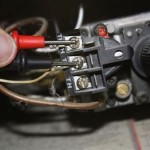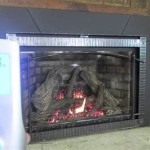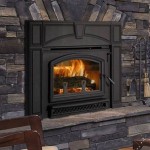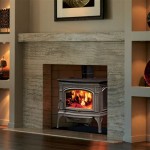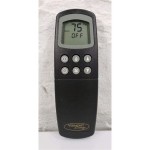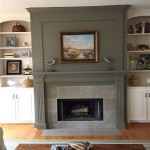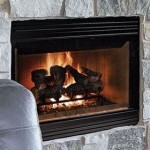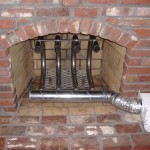The Cost of Indoor-Outdoor Fireplaces: A Comprehensive Guide
Indoor-outdoor fireplaces have grown in popularity, offering a unique blend of ambiance and functionality. These fireplaces serve as architectural centerpieces visible from both inside and outside a dwelling, creating a shared focal point for entertainment and relaxation. However, the installation of such a feature is a significant undertaking, heavily influenced by several factors that directly impact the overall cost. This article provides a detailed examination of the cost considerations associated with indoor-outdoor fireplaces, encompassing the various stages of planning, construction, and maintenance.
Factors Influencing the Initial Cost
The initial cost of an indoor-outdoor fireplace is multifaceted, encompassing several interdependent variables. These include the fireplace type, materials selected, structural modifications required, and labor expenses.
Type of Fireplace: The type of fireplace profoundly influences the cost. Options range from traditional wood-burning fireplaces to gas-fueled and electric models. Wood-burning fireplaces, while aesthetically appealing, often require a more complex and robust chimney system, which can significantly increase the cost. They also necessitate compliance with local regulations regarding emissions and wood storage. Gas fireplaces offer convenience and cleaner burning, but the cost will include running a gas line, which can be expensive depending on the distance from the main supply and the complexity of the terrain.
Electric fireplaces represent a simpler installation process, requiring only an electrical outlet. However, they generally lack the authentic ambiance of a wood-burning or gas fireplace. Their cost effectiveness is determined by the frequency of use and the local electricity rates. A dual-sided electric fireplace is also an option and could be cheaper than the other types of fireplaces.
Materials: Material choices impact both the aesthetic appeal and the overall cost. Options include brick, stone (natural or manufactured), concrete, and metal. Natural stone, while visually striking, is typically more expensive than manufactured stone or brick. The selection of firebrick for the firebox lining also affects the cost, with varying grades offering different levels of heat resistance and durability. Furthermore, the use of specialized mortars and sealants designed to withstand high temperatures and outdoor conditions adds to the material expenses.
For the exterior facing, considerations also extend to the surrounding landscape. The material should complement the existing architectural style of the house and blend seamlessly with the outdoor environment. This may involve additional costs for landscaping modifications to ensure a cohesive design.
Structural Modifications: Installing an indoor-outdoor fireplace often necessitates structural modifications to the existing building. This is particularly true if the fireplace is being added to an existing structure rather than being incorporated into the initial design of a new construction. Load-bearing walls may need to be reinforced or relocated, requiring the expertise of a structural engineer and potentially adding significant costs. The foundation must also be adequate to support the weight of the fireplace, and additional footings may be required.
The complexity of these structural modifications depends on the location of the fireplace within the house and the existing building codes. Permits are typically required for any structural work, adding to the overall cost and timeline of the project.
Labor Costs: Labor costs represent a substantial portion of the overall expense. This includes the fees for architects, engineers, contractors, masons, plumbers (for gas fireplaces), and electricians (for electric fireplaces). The complexity of the design and the extent of structural modifications will directly influence the labor hours required. Obtaining multiple quotes from reputable contractors is crucial to ensure competitive pricing and to assess their experience with indoor-outdoor fireplace installations.
It is also important to factor in potential unforeseen issues that may arise during construction, such as unexpected structural problems or delays in material delivery. A contingency fund should be included in the budget to cover these potential cost overruns.
Ongoing Operational Costs
Beyond the initial installation costs, the operation of an indoor-outdoor fireplace incurs ongoing expenses. These costs vary depending on the type of fireplace and the frequency of use.
Fuel Costs: Fuel costs are a primary consideration for wood-burning and gas fireplaces. Wood-burning fireplaces require a consistent supply of firewood, which can be purchased or obtained through self-harvesting (subject to local regulations). The cost of firewood varies depending on the type of wood, the quantity purchased, and the location. Proper storage of firewood is also essential to prevent moisture absorption and insect infestation.
Gas fireplaces require a connection to a natural gas line or a propane tank. The cost of natural gas fluctuates depending on market conditions and seasonal demand. Propane tanks require periodic refilling, and the cost per gallon can vary significantly depending on the supplier and the location.
Electric fireplaces, while not requiring fuel, incur electricity costs. The energy consumption of an electric fireplace depends on the heating output and the duration of use. It is important to consider the local electricity rates when evaluating the operational costs of an electric fireplace.
Maintenance Costs: Regular maintenance is essential to ensure the safe and efficient operation of an indoor-outdoor fireplace. Wood-burning fireplaces require chimney cleaning to remove creosote buildup, which is a highly flammable substance that can cause chimney fires. The frequency of chimney cleaning depends on the frequency of use and the type of wood burned.
Gas fireplaces require annual inspections to check for gas leaks and to ensure the proper functioning of the burner and ignition system. Electric fireplaces typically require minimal maintenance, but periodic cleaning of the heating element and fan is recommended.
All types of fireplaces require periodic inspection of the firebox and surrounding masonry to identify any signs of cracking or deterioration. Timely repairs can prevent more extensive damage and prolong the lifespan of the fireplace.
Insurance Implications: The installation of an indoor-outdoor fireplace may impact homeowners insurance premiums. Insurers may require documentation of proper installation and regular maintenance to mitigate the risk of fire. Failure to comply with these requirements could result in higher premiums or denial of coverage in the event of a fire-related incident.
Long-Term Value and Considerations
While the initial and ongoing costs of an indoor-outdoor fireplace can be substantial, it is important to consider the long-term value and potential benefits. These fireplaces can enhance the aesthetic appeal of a property and increase its resale value. They provide a focal point for indoor and outdoor gatherings, creating a warm and inviting atmosphere. The key to maximizing the value involves careful planning, material selection, and professional installation.
A well-designed indoor-outdoor fireplace can also contribute to energy efficiency. By providing supplemental heating, it can reduce the reliance on central heating systems, particularly in the areas immediately surrounding the fireplace. This can lead to lower energy bills and a reduced carbon footprint.
The longevity of an indoor-outdoor fireplace depends on the quality of construction and the level of maintenance. Choosing durable materials and hiring experienced contractors can ensure that the fireplace will withstand the elements and provide years of enjoyment. Regular maintenance, including chimney cleaning, inspections, and repairs, is essential to prevent deterioration and extend the lifespan of the fireplace.
The design and placement of the fireplace should also be carefully considered to maximize its functionality and aesthetic appeal. It should be integrated seamlessly into the existing architecture of the house and the surrounding landscape. The orientation of the fireplace should be chosen to minimize exposure to wind and maximize the view from both the inside and outside of the house.
In conclusion, the cost of an indoor-outdoor fireplace is a complex equation involving numerous variables. A thorough understanding of these factors is essential for making informed decisions and ensuring a successful installation. By carefully evaluating the type of fireplace, materials, structural modifications, labor costs, operational expenses, and long-term value, homeowners can create a stunning and functional addition to their property.

How Much Does An Outdoor Fireplace Cost In 2024 Angi

How Much Does An Outdoor Fireplace Cost In 2024 Angi

Fireplace Installation Cost 2024 Gas Wood Burning Electric

How Much Does An Outdoor Fireplace Cost 2024

Estimated Page Fireplaces Stoves Inserts Wood Gas Pellet

Indoor Outdoor Fireplace Ideas And Options

Gas Fireplace S Installation Cost 2024 Oneflare

How Much Does A Gas Fireplace Cost Fireplaces Direct Learning Center

Montigo S See Through Indoor Outdoor Gas Fireplace Stio

What Does It Cost To Install A Fireplace Vs Wood Stove Stamford Fireplaces
Related Posts

